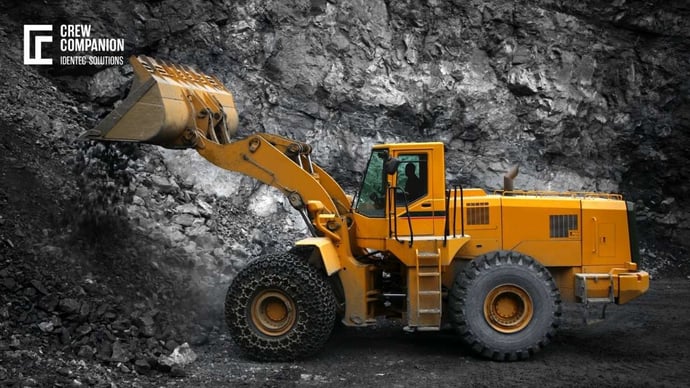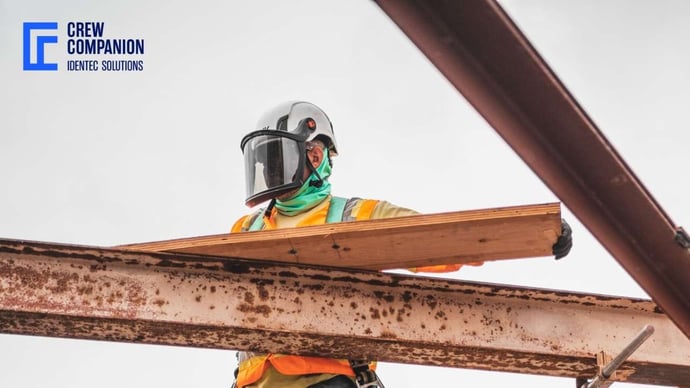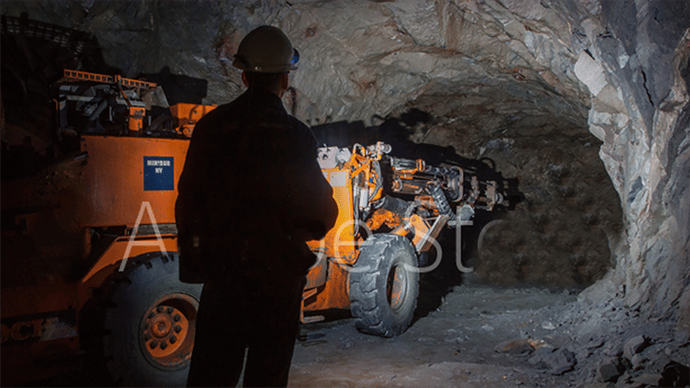Lone worker monitoring in mining
| Written by Mark Buzinkay

No video selected
Select a video type in the sidebar.
What is lone worker monitoring?
Lone worker monitoring involves overseeing the safety of employees who face unique risks due to their isolation from others who could assist in emergencies. In countries like the United Kingdom, Australia, Ireland, New Zealand, and Canada, legislation has encouraged implementing lone-worker policies and safety monitoring methods (1).
For instance, New Zealand authorities highlight several considerations for lone workers:
Security: Working alone can increase the risk from interactions with others, such as customers or strangers, who might pose a threat.
Social Isolation: Lone workers are at risk of social isolation. Managers should ensure regular communication and opportunities for the worker to engage with the team through emails, telephone, or video conferences.
Organisational Isolation: Lone workers must have access to the same information, training, development opportunities, and consultations as their colleagues. Managers should invite them to all relevant events, both social and work-related.
Technological Isolation: Lone workers should have access to the same or better technology as their peers, depending on job requirements.
Safety: The physical safety risks vary by job type. For instance, an arborist working alone faces different risks than an administrator, but both are vulnerable if an accident occurs with no one around to help.
Furthermore, The New Zealand Health and Safety at Work Act 2015 mandates that employers maintain regular contact with lone workers. If continuous contact is not feasible, they must check in with a designated person regularly. Employers must also ensure there is an effective way for workers to get help quickly in an emergency (2).
Methods of Monitoring Lone Worker Safety
Various methods are employed globally to ensure the safety of lone workers, including:
Buddy Systems: Employees are paired to perform tasks together. If an emergency incapacitates one worker, the other can call for help and provide assistance. This actually avoids a lone worker situation at all, but sometimes it is not possible.
Phone-based Check-in Systems: Employees must call a designated receiver after a set period, often hourly or bi-hourly. There are two main types: call center-driven and cloud-based automated monitoring, which typically use a software-as-a-service (SaaS) model. This method mandates proactive worker behaviour.
Safety Monitoring Smartphone Applications: The widespread use of smartphones has made dedicated safety apps feasible. These apps allow employees to quickly request aid through features like panic buttons or prompt check-ins without making a call. Some apps also support hands-free triggers, such as pulling a tether from the phone's headphone jack, enabling the worker to signal for help without unlocking their phone. This method requires mobile, wireless data connections.
Safety Monitoring Devices: These dedicated devices monitor local environmental conditions, such as dangerous gas levels, which smartphone-based solutions may not detect. Often worn by the worker, these devices can be clipped to safety suits, ID badges, or other vital equipment.
How to Monitor Lone workers in mines
Mining, an inherently hazardous industry, has greatly benefited from new technologies, especially in improving lone worker protection. The biggest challenges to safety in remote mining operations include limited human oversight, communication delays, unpredictable environments, and the potential for technology malfunctions. In most incidents, mine operators did not have appropriate visibility of the workers due to their remote location. This made rapid emergency response a significant shortcoming.
However, thoughtful investment in lone miner monitoring tools has significantly enhanced health and safety standards across the industry.
That's why lone worker monitoring systems, designed for quick incident response, are crucial in mining and other resource extraction sites.
Different Aspects of Lone Worker Monitoring
Let's have a look at three common aspects of lone worker monitoring.
Journey Management involves creating a journey plan where users select their mode of transport, location, dates, expected time, and any additional safety integrations like GPS devices, IVMS devices, or risk assessments (read more about risk management in mining). During the journey, users receive automatic SMS and email reminders to check in at predetermined locations to confirm their safety. If they fail to check in, the escalation process triggers, alerting managers to respond. This approach affords particular preparation and a disciplined step-by-step procedure during the assigned job.
Fatigue management focuses on the current condition of workers and requires them to complete a 60-90-second game-like test at the start of each shift or before undertaking high-risk activities, such as driving. The system develops a personal, rolling baseline based on each person's behaviour patterns and average performance, adjusting as they improve. If a user's score falls outside their baseline parameters, they are prompted to retake the test. If the score doesn't improve, their manager is notified to check in with them to ensure they are safe to work.
The goal of such an approach is to identify at-risk workers, initiate conversations, and ensure the well-being of all employees. With the emergence of AI, this approach could improve significantly in terms of pattern recognition and constant fatigue surveillance.
Lone Worker Management allows workers in remote or isolated locations to activate lone worker monitoring. Their real-time location is tracked in different ways. One of them is an app that asks for a periodical check-in to confirm their safety. If a check-in is missed, the designated escalation contact is notified to either confirm their safety or send a rapid emergency response to their live location. Another way is more passive: readers register the whereabouts of lone workers and inform about location, direction and speed of movement.
Personnel Tracking
Personnel tracking solutions offer an efficient way to monitor the location and safety of employees at work. One such technology is RFID (Radio Frequency Identification), which automatically identifies and tracks objects using electromagnetic fields. In an RFID lone worker tracking system, each employee wears a tag that emits a signal detectable by a receiver, typically carried by the employer or emergency services. When an employee raises an alarm, the receiver picks up the signal and sends an alert, ensuring a quick emergency response.
RFID tracking provides several advantages over traditional personnel tracking methods. It offers greater accuracy than manual check-ins and functions well in environments where technologies like GPS are ineffective, such as underground mines. This ensures that employers always know the exact location of their employees. Additionally, RFID is user-friendly; employees only need to wear a tag without carrying extra equipment, simplifying the process. Furthermore, RFID tracking is more cost-effective compared to alternatives like satellite tracking in open pits, making it an ideal choice for businesses aiming to enhance safety without adding complexity.
FAQs
What is lone worker monitoring, and why is it important?
Lone worker monitoring involves overseeing the safety of employees who work in isolation, where they may face unique risks and lack immediate access to help in case of emergencies. It is important because it ensures that workers in potentially hazardous environments, such as mines or remote locations, can receive timely assistance and intervention. Effective monitoring helps prevent accidents, improves response times in emergencies, and enhances overall worker safety and well-being.
How does RFID technology work in lone worker monitoring?
RFID (Radio Frequency Identification) technology uses electromagnetic fields to identify and track objects, including lone workers, automatically. In a lone-worker monitoring system, each employee wears a tag that emits a signal detectable by a receiver. When an employee raises an alarm, the receiver picks up the signal and sends an alert to the employer or emergency services. This system provides accurate real-time location tracking, ensuring that help can arrive quickly in an emergency. RFID is particularly useful in environments where other technologies, like GPS, may not be effective, such as underground mines.
What are the advantages of using RFID over traditional personnel tracking methods?
RFID offers several advantages over traditional personnel tracking methods. It provides greater accuracy than manual check-ins, ensuring that employers always know the exact location of their employees. RFID is effective in environments without functional GPS, such as underground or in densely built areas. Additionally, RFID is user-friendly; employees only need to wear a tag without carrying extra equipment, simplifying the monitoring process. Furthermore, RFID is more cost-effective compared to alternatives like satellite tracking, making it an ideal solution for improving safety without adding complexity.
Takeaway
Lone worker monitoring is essential for ensuring the safety of employees who work in isolation and face unique risks, particularly in hazardous industries like mining. The selection of monitoring technology depends on various factors, including the specific work environment, the nature of the risks involved, and the need for reliable communication and quick emergency response. Among the available technologies, radio frequency identification (RFID) stands out as a reliable, safe, and cost-efficient choice. RFID offers accurate real-time location tracking, functions well in environments where GPS may not be effective, and simplifies the mine monitoring process without adding complexity. By implementing effective lone-worker monitoring systems, businesses can significantly enhance health and safety standards and ensure the well-being of their employees.
Delve deeper into one of our core topics: Mining Safety
Glossary
A Lone Worker (LW) - is an employee who performs an activity that is carried out in isolation from other workers without close or direct supervision. Such staff may be exposed to risk because there is no one to assist them, so a risk assessment may be required. Lone workers are today commonly supported with automated monitoring systems based on cloud services and specialized monitoring call centres - often referred to as 'Alarm Receiving Centre' or 'ARC' in the UK, or 'Emergency Dispatch Center' or 'EDC' in the US.
Sources:
(1) https://web.archive.org/web/20130705132014/http://www.worksafe.vic.gov.au/__data/assets/pdf_file/0006/9555/WS_MIA_WORKING_ALONE_WEB.pdf
(2) https://www.okaloneworker.com/2019/02/lone-worker-legislation-new-zealand/
(3) https://en.wikipedia.org/wiki/Lone_worker
Note: This article was updated on the 10th of January 2025

Author
Mark Buzinkay, Head of Marketing
Mark Buzinkay holds a PhD in Virtual Anthropology, a Master in Business Administration (Telecommunications Mgmt), a Master of Science in Information Management and a Master of Arts in History, Sociology and Philosophy. Mark spent most of his professional career developing and creating business ideas - from a marketing, organisational and process point of view. He is fascinated by the digital transformation of industries, especially manufacturing and logistics. Mark writes mainly about Industry 4.0, maritime logistics, process and change management, innovations onshore and offshore, and the digital transformation in general.




